
SOLD OUT
From the dawn of the very first streamlined aluminum trailer in 1934 to the most recent offerings from genre giant Airstream, Americans have always loved the look, style, and feel of these riveted wonders. Although many beautiful examples are on the road today, an equal number of trailers could use a little, or a lot of, TLC. Some need a minor touchup, some need modernizing and updating, and some need a flat-out restoration.
Author Tony Martin guides you through the process from selecting the right project all the way to polishing your completed streamline aluminum trailer. Every aspect of restoring and modifying your project is addressed including frame, chassis, bodywork, plumbing, electrical, cabinets, appliances, etc. Much of this work is covered in step-by-step restoration photo sequences, giving you a visual guide to converting a road-side eyesore into the belle of the trailer park ball.
Streamline Aluminum Trailers: Restoration & Modification is a must-have book if you currently live in one of these gems at an RV park or are restoring and modifying one for leisure use. Clubs and events are even scheduled around the gathering and appreciation of these timeless beauties. There has never been a book to fully aid in the restoration and modification of these beloved trailers until now. Add this useful resource to your library today.

Gabriel Voisin, Henry Farman and the World’s First Practical Aeroplane
This is the story of an unjustly neglected landmark in the history of technology: the first comprehensive account of the genesis and evolution of the Voisin biplane with which Henry Farman proved to Europe at least that heavier-than-air flight was a practical proposition, and which has been eclipsed in the popular imagination by the Wright brothers’ 1903 breakthrough at Kill Devil Hills.
As well as chronicling the intense rivalry between the Old World and the New, it explores the technical background of Farman’s Voisin and charts its wider social and cultural impact in the US and Europe while illuminating the intelligence, ingenuity and indomitable spirit of the characters involved.
Relying on primary sources wherever possible, lavishly illustrated by contemporary photographs and with short biographies of all of the main protagonists, it unravels a complex tale of intrigue, daring innovation, personal courage and dogged determination in a world of doers, dilettantes and daredevils, where autodidacts mixed with aristocrats and theories with inspired pragmatists.
They emerge as a colorful bunch of fierce individualists competing against each other and their transatlantic rivals to realise an ambition which was rightly hailed as the dawn of a new era. As such, their achievements merit celebration alongside the other epoch-defining beacons of Modernism that shown from Paris in the first years of the last century.
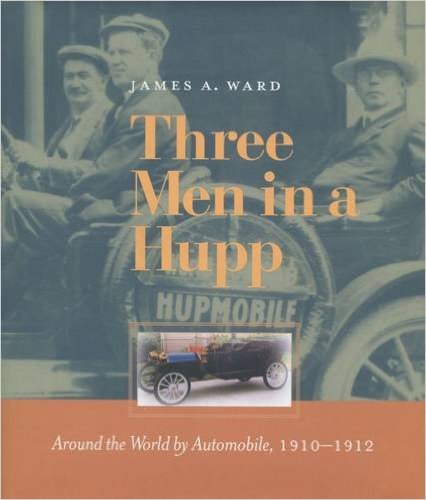
In late 1910, three American adventurers set off on a remarkable around-the-world journey by automobile. Sponsored by the Hupp Motor Car Corporation, the trip was intended to publicize the durability of the Hupmobile and help stimulate export sales.
The car was first driven from Detroit to San Francisco—a very difficult journey in its own right in 1910. From San Francisco, the car and its drivers took a steamship to Hawaii, and from there to Fiji, Australia, New Zealand, and Tasmania, unloading and touring at each port of call. The men and their machine spent the next five weeks attempting to drive through the Philippines, and then pushed on to Japan and China, where they managed to stay one step ahead of the Chinese revolution. They then drove across India, and from there, sailed to Egypt, brining the first automobile ever to be seen in that country. Next, the Hupmobilists sailed to Italy. In Rome, the adventurers met Pope Pius X, and then drove north to Germany and France. They crossed the English Channel to Folkstone, toured England, and then ferried from Liverpool to Ireland. They returned to New York in time for the 1912 auto show.
In the end, the Hupmobile was driven 41,000 miles and transported by steamship another 28,000. A new world was dawning, both for transportation and for American business enterprise.
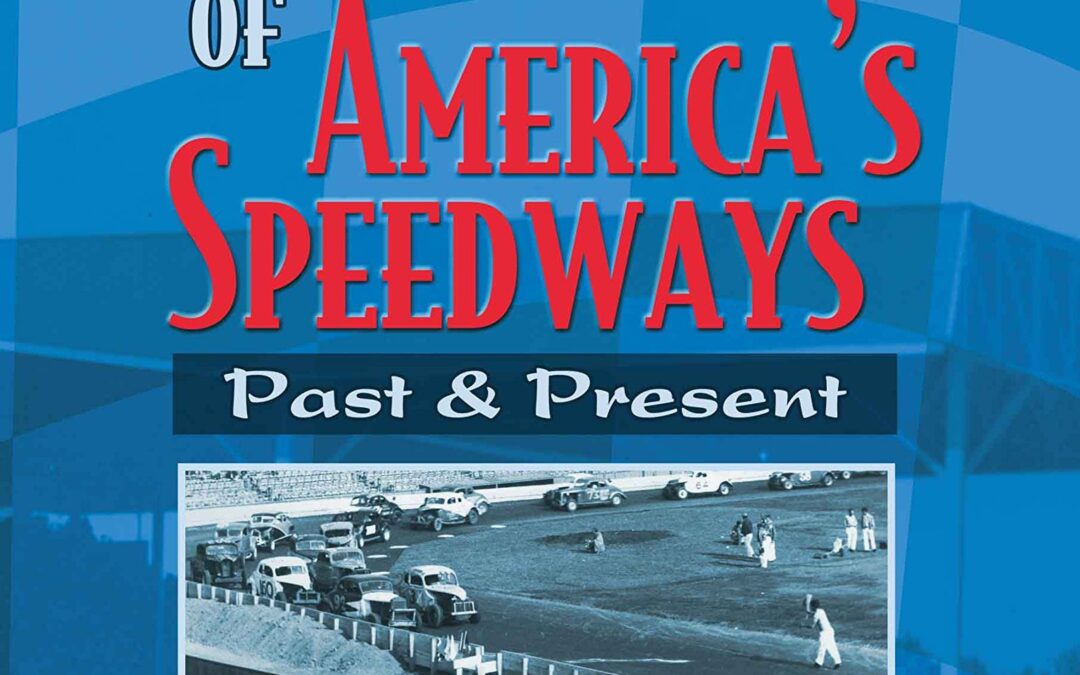
History of America’s Speedway – 2017 Edition
The brand new completely updated AMERICA’S SPEEDWAYS, Past & Present is available.
The fourth edition lists updated information on over 9,000 auto racing facilities that have existed since the dawn of the automobile, with data on the town they were located, their various names, the sizes of each track, and the years they operated.
Covers oval tracks, road courses and dragstrips.
883 page library-quality book.
Over 700 photos spread throughout.
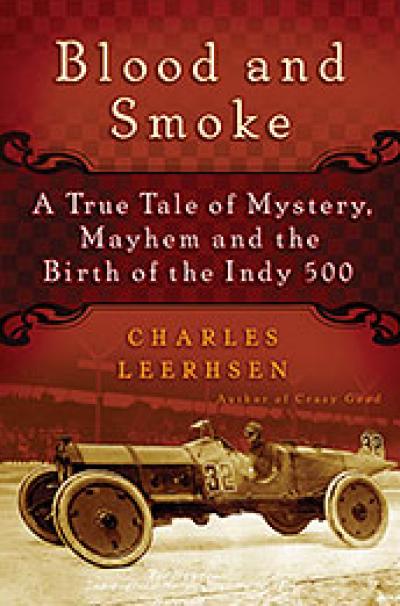
“Forty cars lined up for the first Indianapolis 500. We are still waiting to find out who won.
The Indy 500 was created to showcase the controversial new sport of automobile racing, which was sweeping the country. Daring young men risked life and limb by driving automobiles at the astonishing speed of 75 miles per hour with no seat belts, hard helmets, or roll bars. When the Indianapolis Speedway opened in 1909, seven people were killed, some of them spectators. Oil-slicked surfaces, clouds of smoke, exploding tires, and flying grit all made driving extremely hazardous, especially with the open-cockpit, windshield-less vehicles. Most drivers rode with a mechanic, who pumped oil manually while watching out for cars attempting to pass, and drivers would sometimes throw wrenches or bolts at each other during the race. The night before an event the racers would take up a collection for the next day’s new widows.
Although the 1911 Indy 500 judges declared Ray Harroun the official winner, there is reason to doubt that result, since Speedway authorities ordered the records to be destroyed. But Blood and Smoke is about more than a race. It is the story of America at the dawn of the automobile age, a country in love with speed, danger, and spectacle.”

Among the engineers fueling the rapid rise of the automotive industry at the dawn of the 20th century was James Allison, a fountain pen maker who joined with Carl G. Fisher in 1904 to found Prest-O-Lite, an early manufacturer of the power source for automotive headlights. This biography tracks Allison’s involvement in the Indianapolis 500, which he cofounded with Fisher and two others, as well as his machine shop’s construction of the Liberty engine, the first mass-produced aircraft engine, and also the V1710, the workhorse of World War II military aircraft. Through his unique ingenuity and perseverance, Allison created a legacy that still resonates today at the Indianapolis 500, Rolls-Royce, and Allison Transmission.
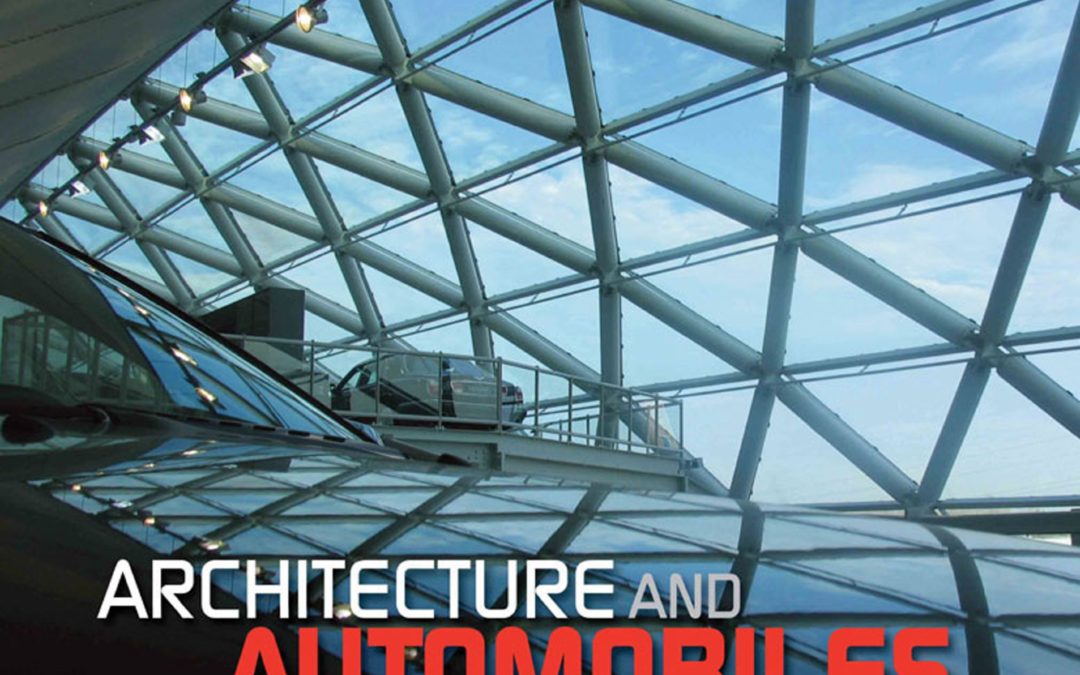
Architecture and automobiles have been intrinsically linked since the dawn of the internal combustion engine, from the assembly plant to the showroom and on to that ubiquitous fixture of the artificial landscape, the service station. The streamlined forms of automobiles have often inspired architects and some have even ventured into designing their own cars.
This book features Foster and Partners, Bohlin Cywinski Jackson, ONL, Renzo Piano, Populous, Zaha Hadid, UNStudio and Massimiliano Fuksas, and presents their best projects, including the BMW Museum in Munich, the Porsche Museum in Stuttgart, the Audi museum in Ingolstadt by 24-H, Manuel Gautrand’s Citroen museum on the Champs Elyssee in Paris, and the Regio Emilia bridge by Santiago Calatrava in Italy.
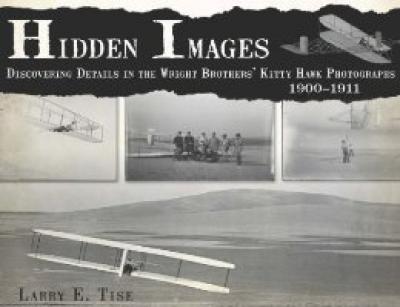
“On December 17, 1903, Kitty Hawk, North Carolina, was no longer a quiet outpost among the islands of the Outer Banks. It was then that Orville and Wilbur Wright completed the first manned flight and the era of aviation began.
What is not well known about the Wright brothers’ is that they were highly skilled amateur photographers, who even had their own photo laboratory. Their images were purposeful as well as documentary, allowing Orville and Wilbur to re-examine their work and share their experiences with colleagues. Now, through advances in technology, readers can for the first time see details of not only those first amazing flights, but also a glimpse into the lives and the people who surrounded the Wright brothers during their time at Kitty Hawk.
Hidden Images: Discovering Details in the Wright Brothers’ Kitty Hawk Photographs, 1900-1911, by historian and Wright brothers’ scholar Larry Tise, is a distinctive illustrated history, which for the first time brings to light the world of the Wright brothers at the dawn of aviation. The details in the images presented within allow the reader to step back in time and truly understand the trials and errors endured by the Wright brothers during these historic years in the history of aviation.”
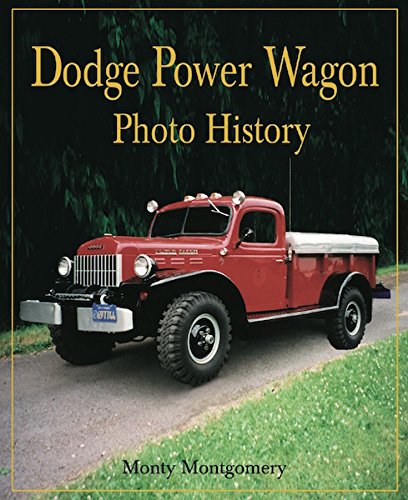
An exciting history of the Dodge Power Wagon from 1940-1980. Read the fascinating story of Dodge’s most famous truck from its beginnings at the dawn of WWII to the end of the marque in 1980. Along the way you will see how this workhorse adapted to changing markets and buyer preferences while maintaining its position as the most rugged 4×4 available.
Military and civilian Power Wagons models are shown, along with technical information, mechanical specifications, and production figures. A section dedicated to the post Power Wagon trucks is included and highlights the Ramcharger and Plymouth Trailduster. 7.25″”wide x 9″”tall
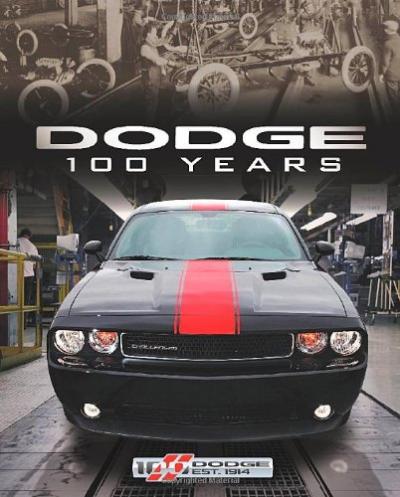
“It was 1900 when Horace and John Dodge founded the Dodge Brothers Company, in a machine shop in Detroit, Michigan. The high-quality components they produced advanced the dawn of the American automotive industry, appearing in the famous Curved Dash Olds and Henry Ford’s Model A. Soon, the brothers became the exclusive supplier to Ford, a position they would hold for over a decade before striking on their own in 1913 to produce their first car a year later.
In Dodge 100 Years, renowned automotive journalist Matt DeLorenzo provides an unrivaled chronicle of Dodge throughout the past century. Starting with the company’s modest beginnings in the 1900s, DeLorenzo recounts the brothers’ decision to venture into full auto manufacturing, their untimely deaths in 1920, and the company’s purchase by Chrysler in 1928. The book’s rich history also tells the tale of Dodge’s role in the “arsenal of democracy” during World War II and its iconic lineup during the late 1950s. The Dodge story is not without its struggles, though: while the division played a key part in the muscle-car wars of the 1960s and early ’70s, the oil crisis of 1973 took its toll on Dodge and Chrysler as other manufacturers moved toward more efficient models. But under the strong leadership of Lee Iacocca from 1979 onward, Dodge reasserted itself with such vehicles as the K-car and the Caravan minivan. The Dodge story wouldn’t be complete without speaking to its iconic performance cars like the Viper, Challenger, and Charger, as well as what’s in store for its future as indicated by the innovative Dart. Dodge 100 Years is more than a tale of classic American perseverance; it is a celebration of one of America’s most beloved and enduring automotive brands.
”
The Turquoise Trail












